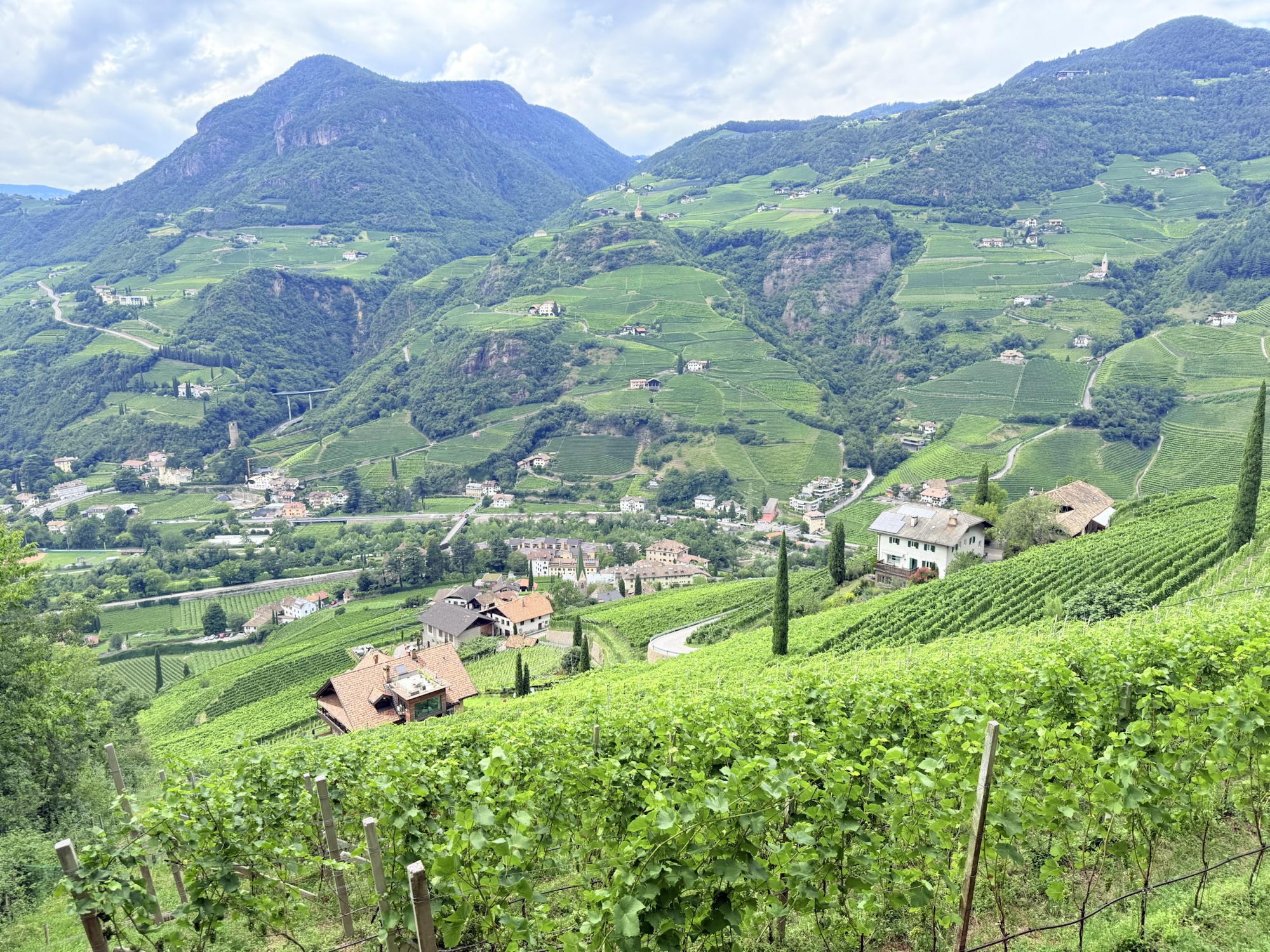Yesterday, I did a lot of reading on wikipedia while on the train. I was curious as to the history which prompted all signs to share both Italian and German languages in the region of Bolzano. Today, I read that 75% of the South Tyrol region speak Italian, and about 25% speak German. But in the past, there was a lot more Germans than Italians. I read some interesting facts of his modern history.
I read that after World War I, South Tyrol, including Bolzano, was annexed by Italy from Austria-Hungary. Under Mussolini’s government, policies were introduced to suppress the German language and culture. Many Germans were offered the chance to resettle in Germany. Those who chose to remain were required to undergo Italianisation.
These policies included banning German in schools, requiring people to Italianise their names, public offices, and newspapers, and making Italian the only official language for government and courts. After World War II, South Tyrol remained part of Italy, but German speakers were granted protections through autonomy agreements, allowing German language, education, and culture to be fully restored and accepted alongside Italian.
As for today’s education, Mitchell had a plan for something that I might like, and he was right. We did a scavenger hunt which he found on TripAdvisor.
Our scavenger hunt through Bolzano took us to ten key historical sites. Each revealed something about the city’s past and present. I read each historical fact and kept the brief facts. There was a lot of info and the below is a very brief summary with some of it I had assistance in summarising. I won’t give away the answers in case someone googles this. Once again, there will be underlined links in this post where you can click them.
Bolzano Cathedral (Dom Maria Himmelfahrt / Duomo Maria Assunta)
The Cathedral, next to Piazza Walther, dates from the 13th to 14th centuries. It is built of local sandstone and its 65-metre spire was completed by Lombard and Swabian artisans in the early 16th century. It features Gothic elements, including gargoyles and balustrades. Despite WWII damage, it has been restored. Here, we needed to decode some Roman numerals.
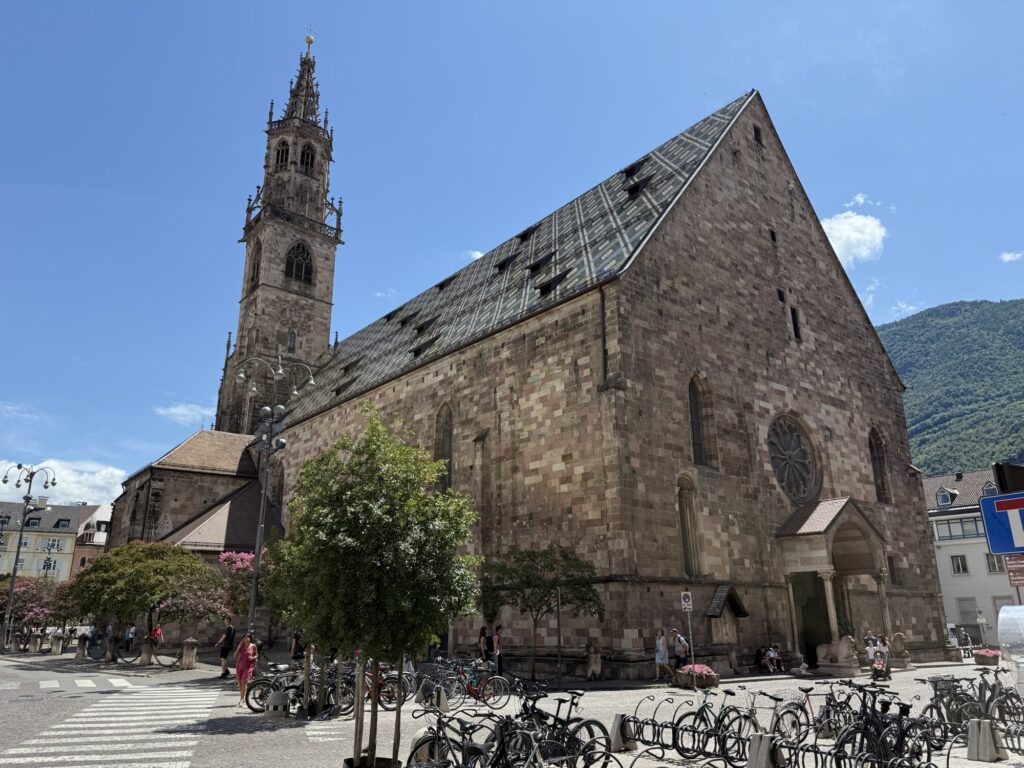
Piazza Walther
Established in 1808, this central square has had various names but has been dedicated to the minstrel Walther von der Vogelweide since the 19th century. The square remains a busy meeting point and hosts regular events, including markets. In the square was a fountain we needed to identify the important instruments on the fountain. The statue is of Walther von der Vogelweide.
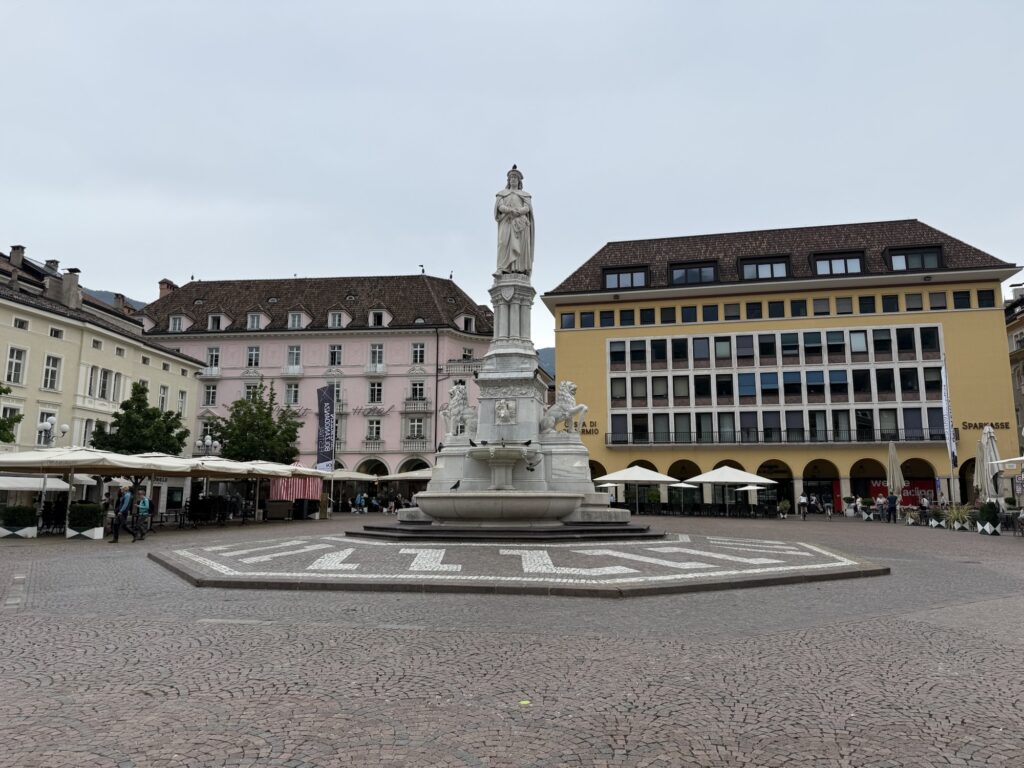
Old Town of Bolzano
The Old Town preserves medieval street layouts and buildings. Architectural highlights include Maretsch Castle and the Mercantile Building. The area reflects centuries of trade and cultural exchange. Here, we identified a King.

The Arcades (Lauben)
These arcades, dating to the 12th century, housed goods and provided shelter for trade. Above them, apartments were built. The Old Town Hall here includes remnants of 15th-century paintings. Today, the Arcades remain a popular shopping area. We identified a religious figure here who looks over the streets.
Piazza delle Erbe
A marketplace since the 16th century, the square traces its roots to 1277. It was historically used for trade in poultry and other goods. A plaque here marks Goethe and Emperor Joseph II’s visit. The Neptune Fountain is a notable feature. We found the symbols around a well known saint.
South Tyrol Museum of Archaeology
This museum displays South Tyrol’s ancient history, from early settlements to cultural exchanges between civilizations. It is known for housing Ötzi, the 5,000-year-old Iceman discovered in 1991. We had to google this one without having a ticket, although it was 4 letters and now we know who he is.
Municipal Museum
Founded in 1882, this museum holds one of South Tyrol’s most comprehensive collections, with artefacts spanning from Romanesque to Gothic periods. The current exhibitions include art from the 8th to 20th centuries. A simple puzzle.
Victory Monument
Commissioned by Mussolini and inaugurated in 1928, the Victory Monument asserts Fascist ideology through its architecture. It has been a symbol of tension between Bolzano’s Italian and German-speaking populations. This answer was in the name, but also another King.
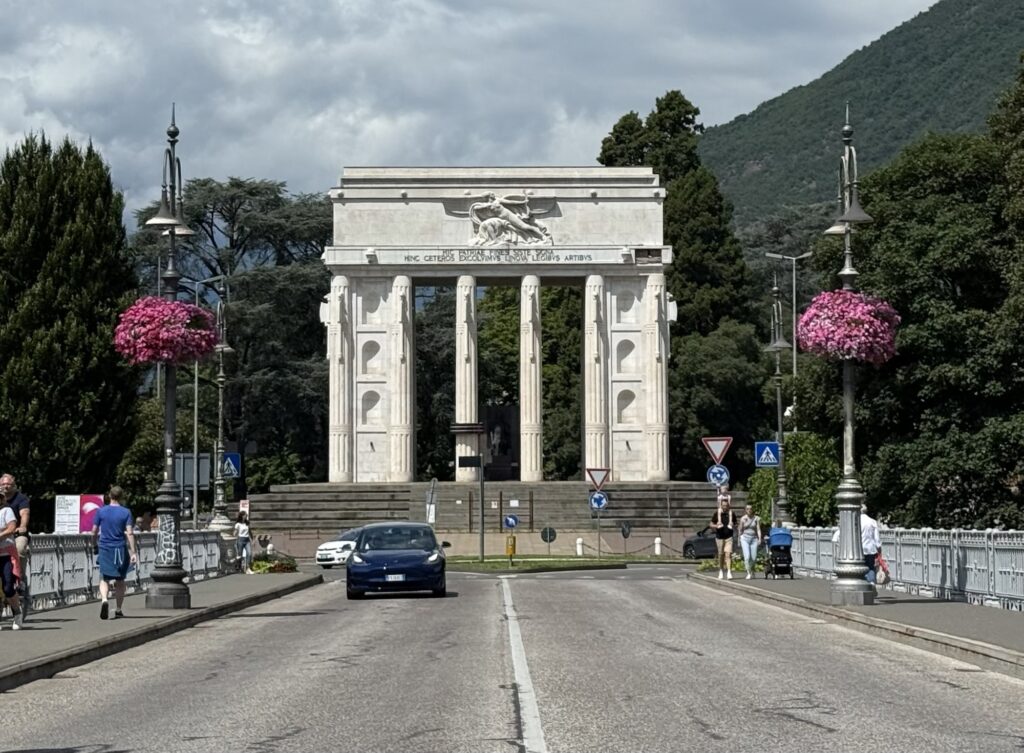
Museion
Founded in 1985, Museion focuses on modern and contemporary art. It holds over 4,500 works and promotes intercultural and interdisciplinary exchanges. It caters to all ages through exhibitions and educational programs. Here we had a traditional book cyber, matching a sequence of letters to corresponding letters in a phase we had to find.
Chiesa dei Domenicani (Dominican Church)
Dating from 1272, this church showcases Gothic architecture and includes frescoes from the 14th century. WWII bombings altered the site. Today, it houses the City Gallery and Music Conservatory. In 2015, it underwent restoration. Next to the church was a city coat of arms, but a few things were missing we had to find.
After we successfully completed this scavenger hunt, with top scores, we had some Gelato given it was warming up today. We ate this back at our starting point at Bolzano Cathedral.
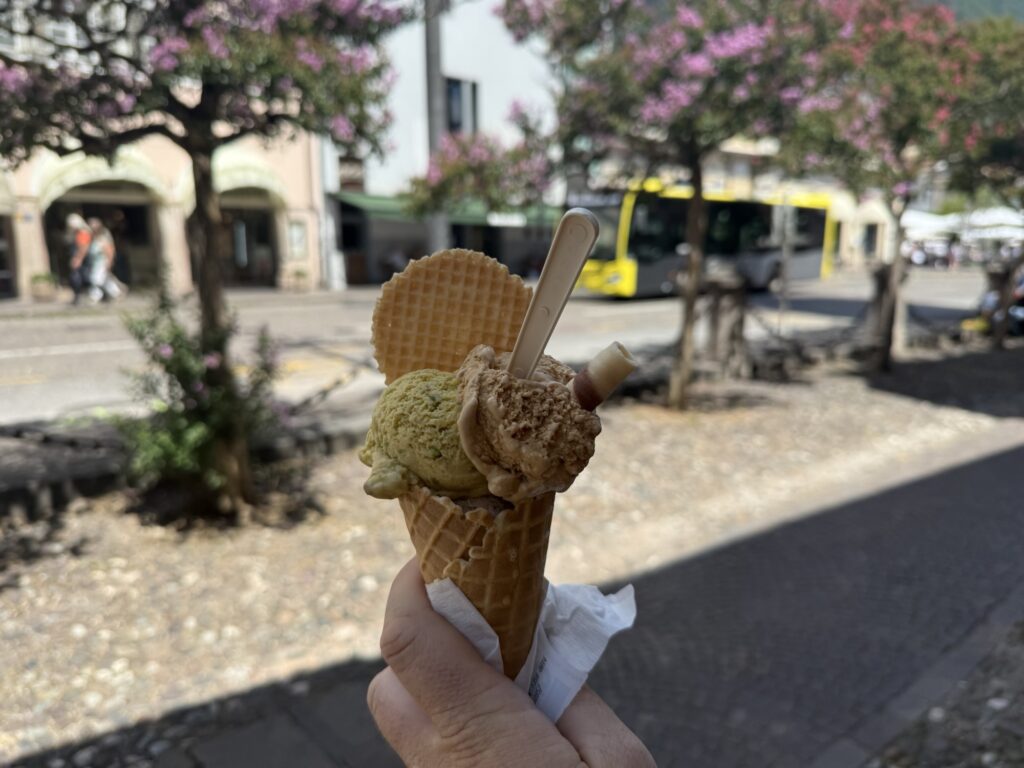
We also visited a supermarket where I got a drink and Mitchell got some more sunscreen before we decided to get a city sky line shot up a small hill.
This walk turned into a slightly longer journey than expected as the lower level walking track was blocked, but we ended up at a very scenic spit which we took a few photos.
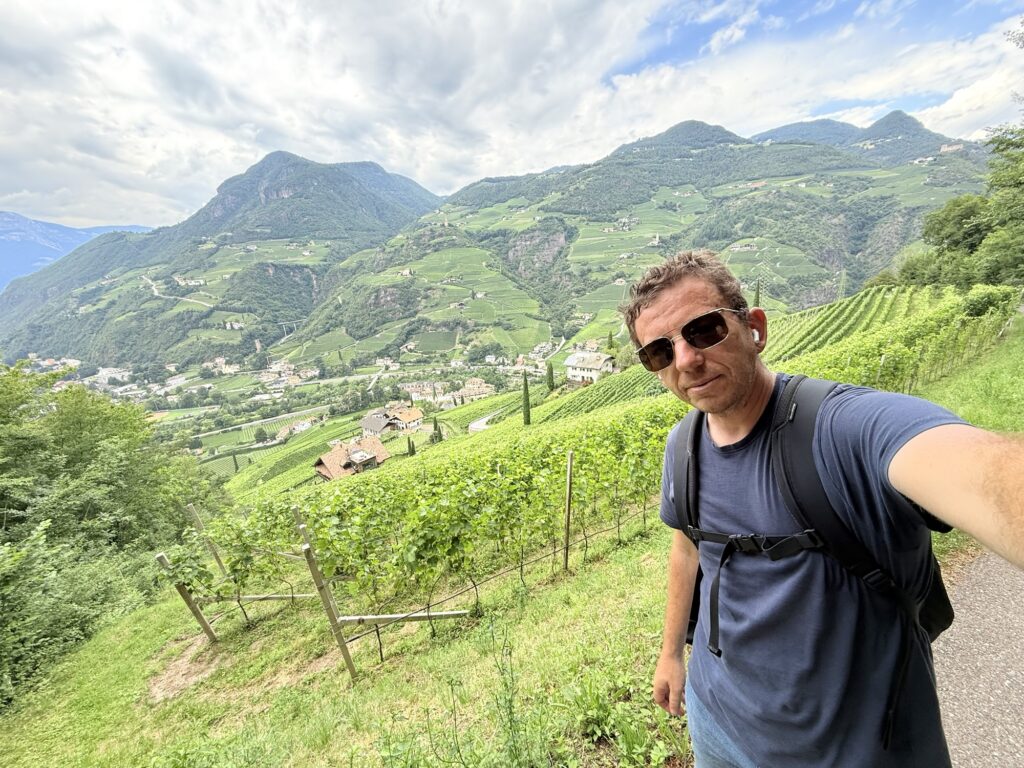
Runkelstein Castle
We next realised that just down the valley was Runkelstein Castle, also known as the illustrated castle as it had paintings all through it on the walls. We took an auditory tour which was pretty good. We visited the tower. Below are a selection of photos.
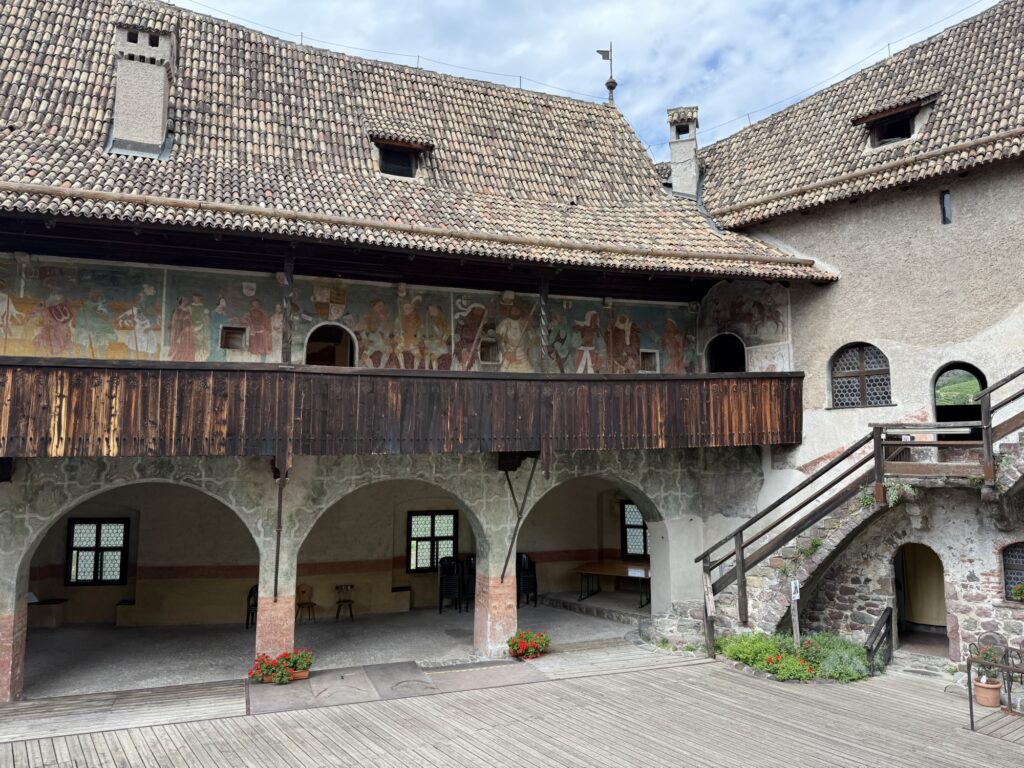
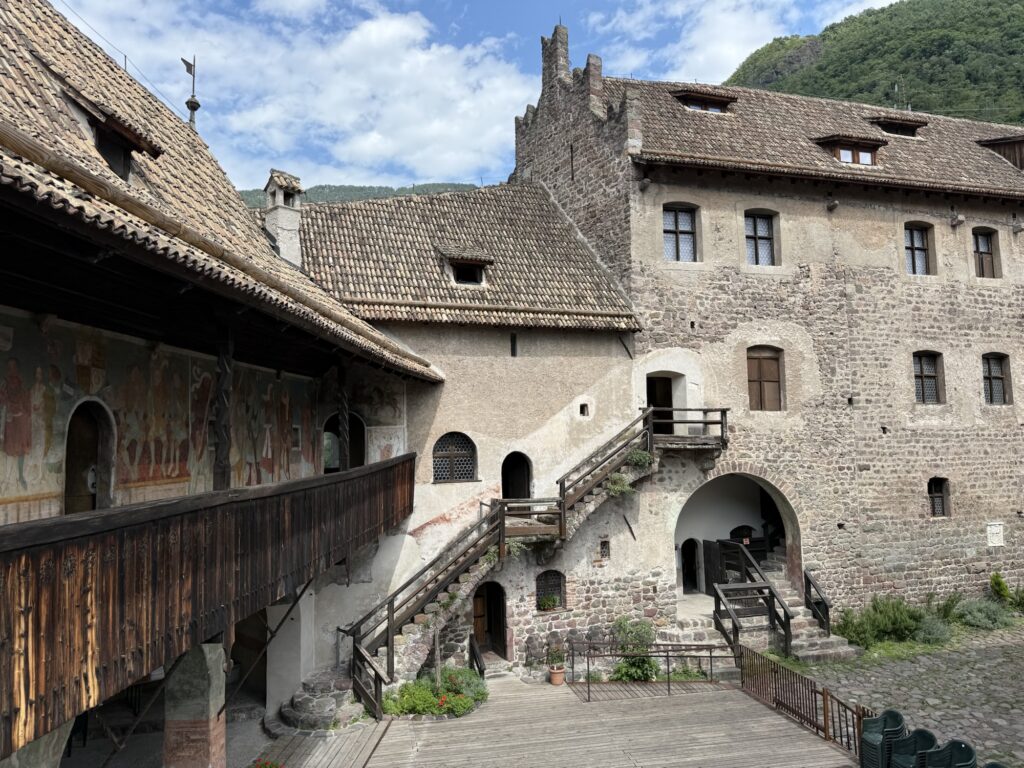
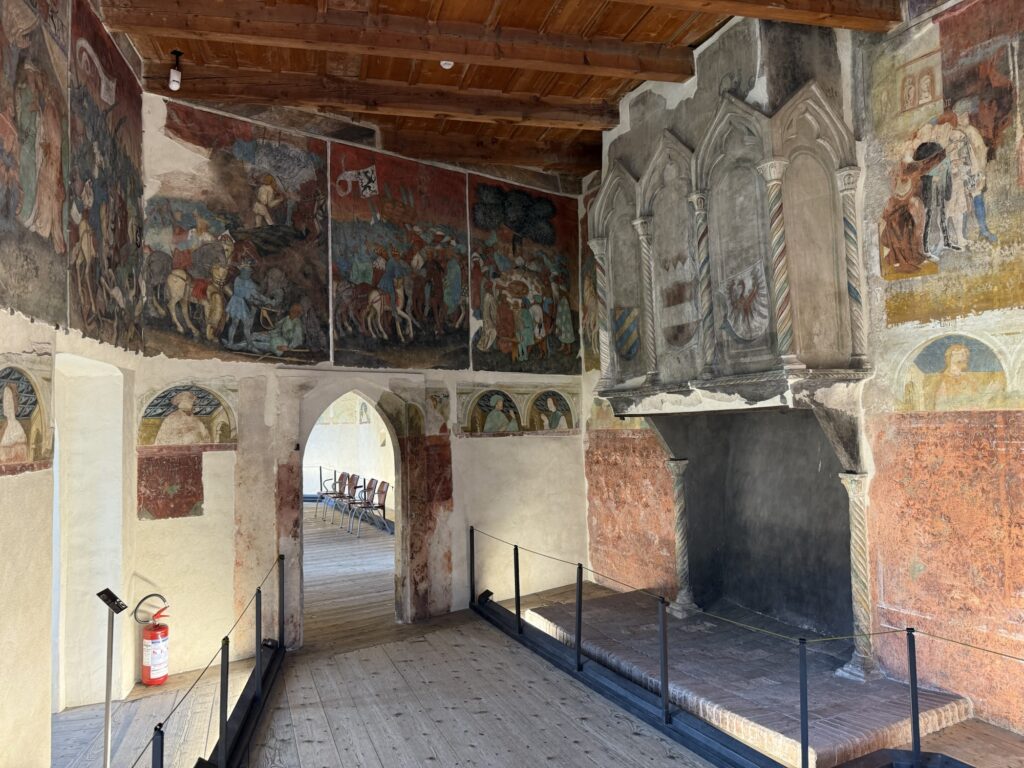
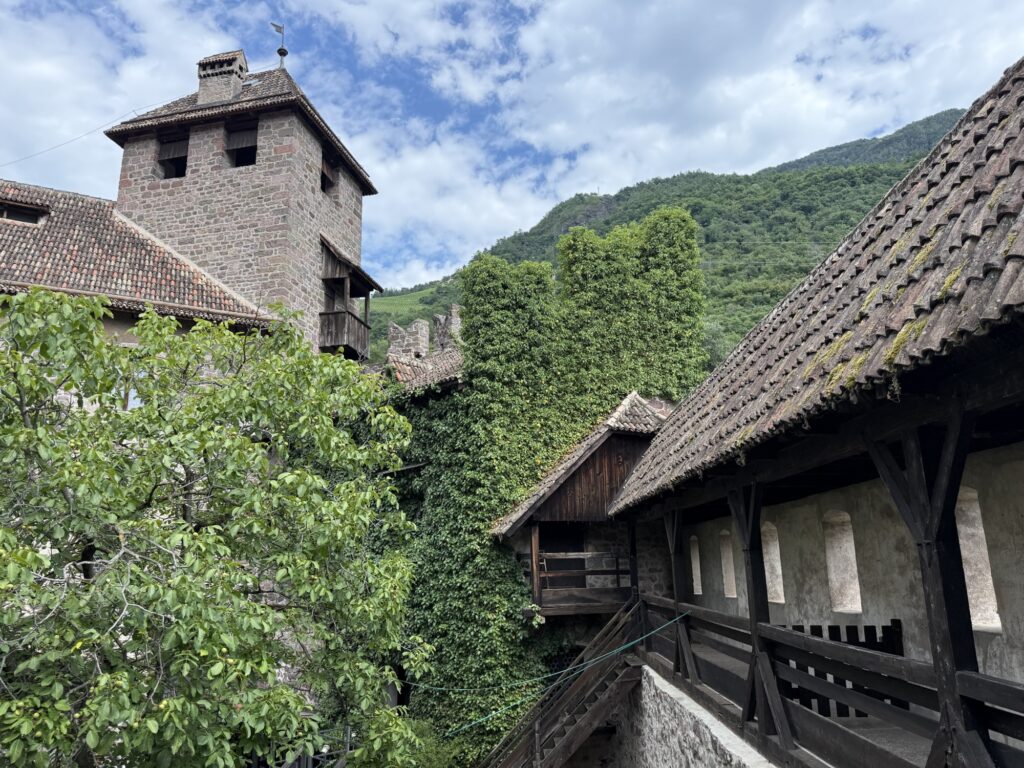
Our walk back was along the valley creek until it reached the river, that was when we knew we had arrived back at the apartment.
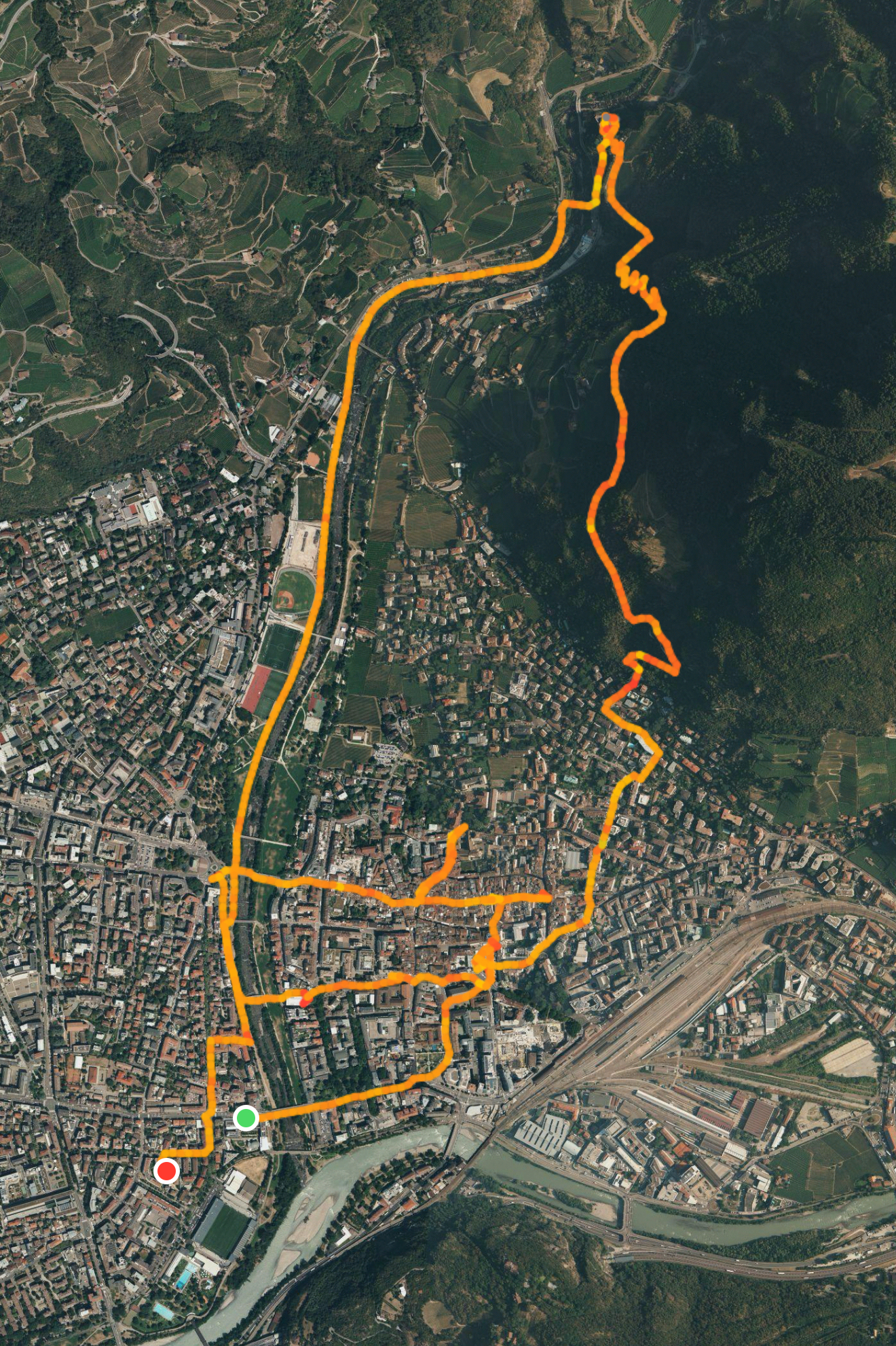
To finish off the day, we did one more load of laundry and found some dinner.
As we settled in for the evening, we had our first storm roll in over the mountains. I listened to the thunder and saw the occasional flash of lightning on the neighbouring appartments. 
